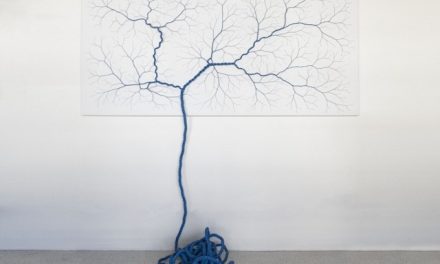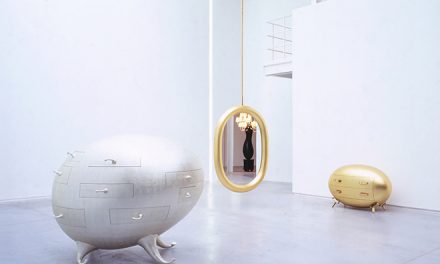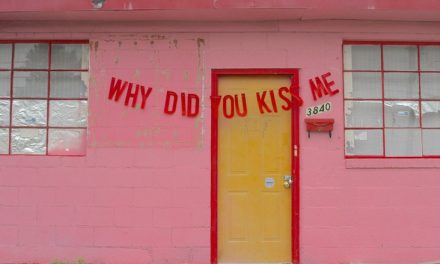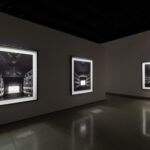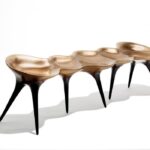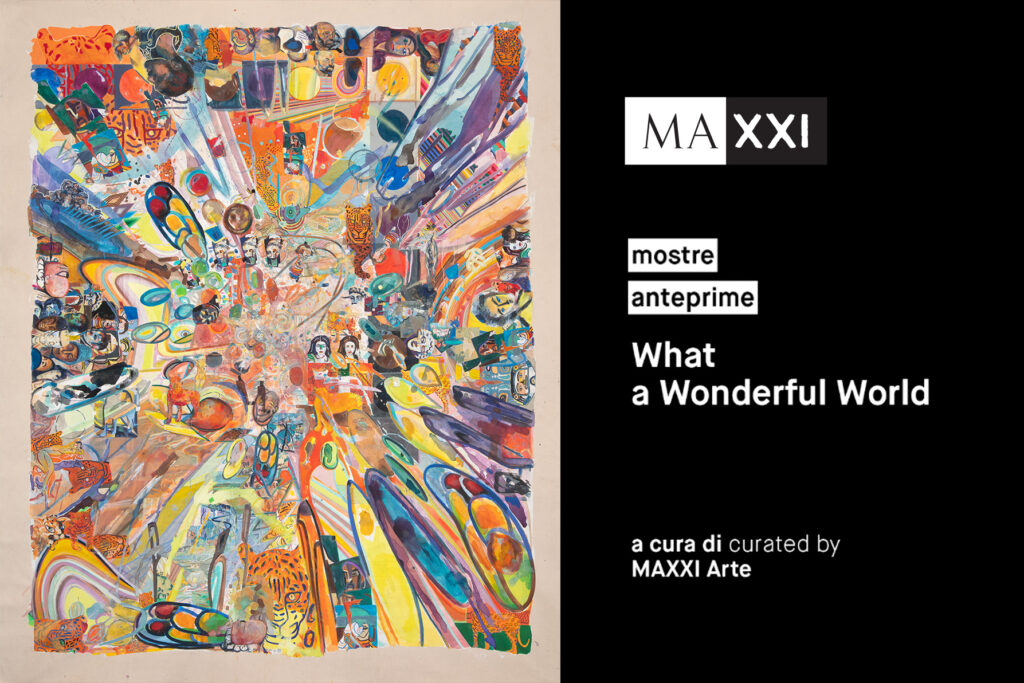He is known as the man who turned half-naked woman into hat stands or chairs, and called it art. As a mayor retrospective of his work launches at the Royal Academy, we present a few facts you might not know about this pop artist and ultimate bad boy of British art.
Hat Stand (detail), 1969. Photo: Allen Jones
He is known as the man who turned half-naked woman into hat stands or chairs, and called it art. As a mayor retrospective of his work launches at the Royal Academy, we present a few facts you might not know about this pop artist and ultimate bad boy of British art.
His first controversy piece was exhibited in 1968 and since then his work has been heavily attacked not just by feminists, but by the public, the media and critics alike. Smoke and stink bombs were thrown at a show in 1978 and when Chair was exhibited at the Tate in 1986, a group of feminists poured paint over it. The Guardian even suggested he should not be allowed to exhibit.

Chair, 1969. Photo: Allen Jones
His furniture pieces inspired The Clockwork Orange: his hyperrealistic sculptures caught the attention of Stanley Kubric, who wanted to include them in the set design of his film. As the artist recalls, Kubric called him and said ‘I’m a very famous film director, this will be seen all over the world and your name will be known.’ Jones declines the offer and Kubrick’s prop team asked another designer to create ‘woman sculptures’.
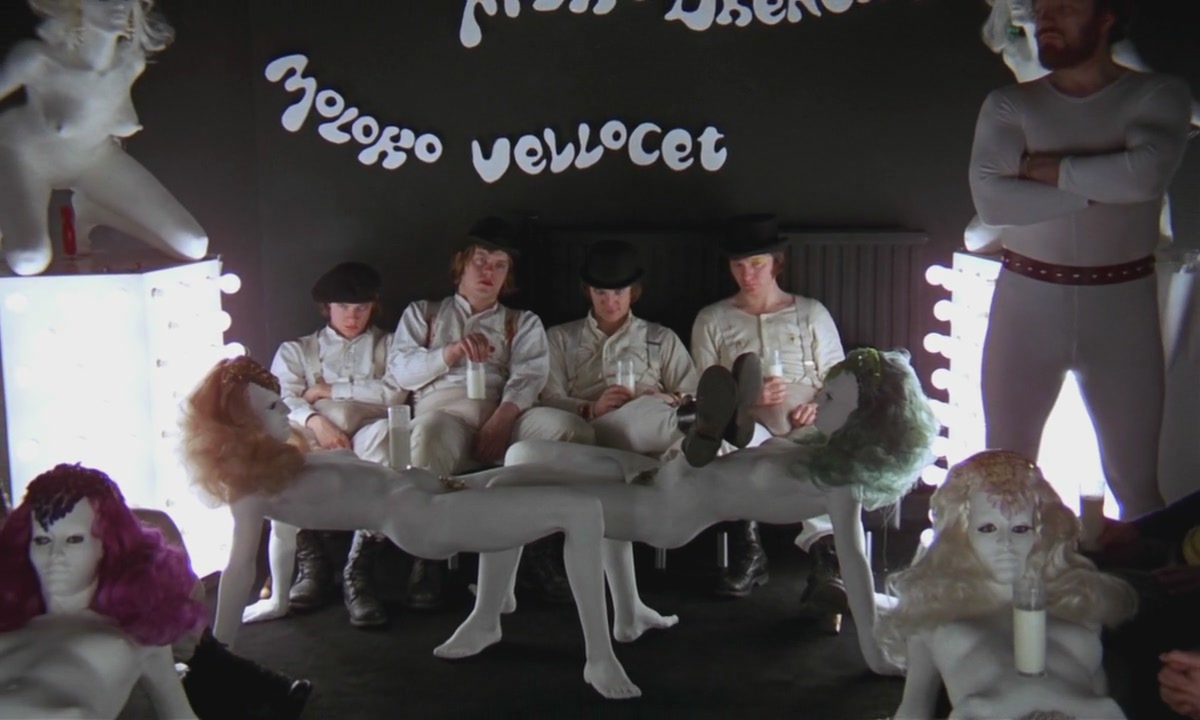
Scene from The Clockwork Orange, Stanley Kubric
The irony is that he defends he is a feminist himself; his work isn’t really about women; it’s about men and how they look at and think about women; and their strategies to control their desire, or neutralise it.
He also explores the theme of men transformed into women, like this work where a man dancing with a woman becomes one with her body.
Sin-Derella, 1937. Photo: Allen Jones
There’s more to Allen Jones than ‘women sculptures’: The ‘Allen Jones Woman’ remains a essential ingredient in his work but this exhibition also shows Jones’s full range of paintings, which include large bright sensual works featuring couples embracing and abstract figures of strong sensuality and visual intelligence.
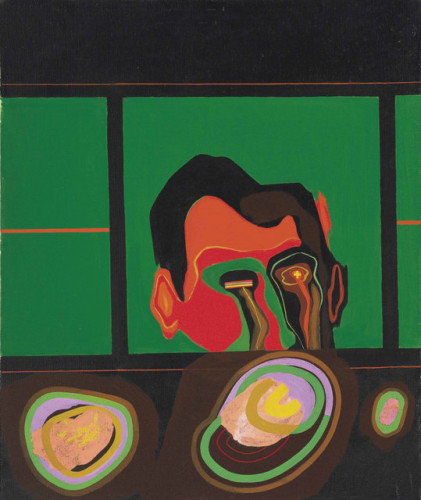
Interesting Journey, 1962.Photo: Allen Jones
He joined the Royal College of Art in 1959 but was expelled after one year. There he met fellow students Peter Phillips, David Hockney and R.B. Kitaj. Just like Richard Hamilton and others were doing at the time, he started exploring mass culture as high art, but he attracted negative attention from the college leaders, who decided to expel him.
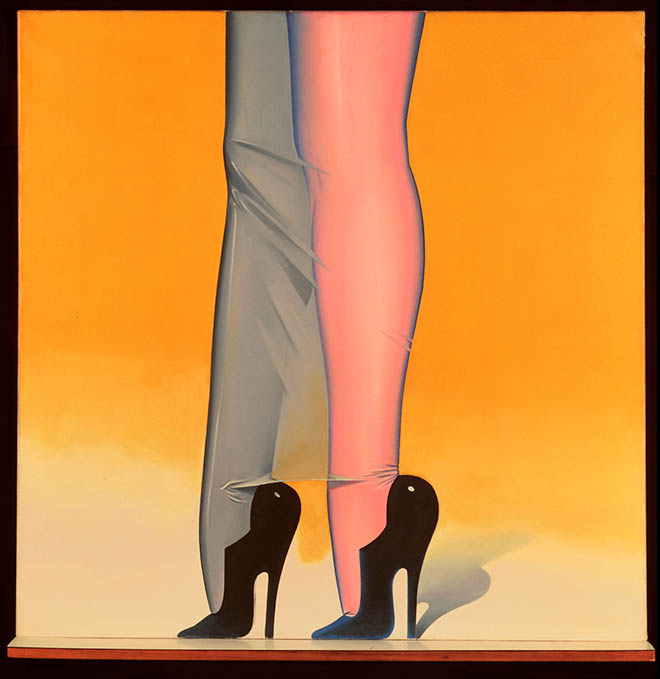
First Step, 1966. Photo: Allen Jones
Some furniture sculptures have been dressed in AtomAge, a company which originally described itself as a “manufacturer of weatherproofed for lady pillion riders”.
In 2013, Jones collaborated with Kate Moss for the piece Body Armour, which featured on the cover of POP. The photograph was sold for over £30,000 at Christie’s.
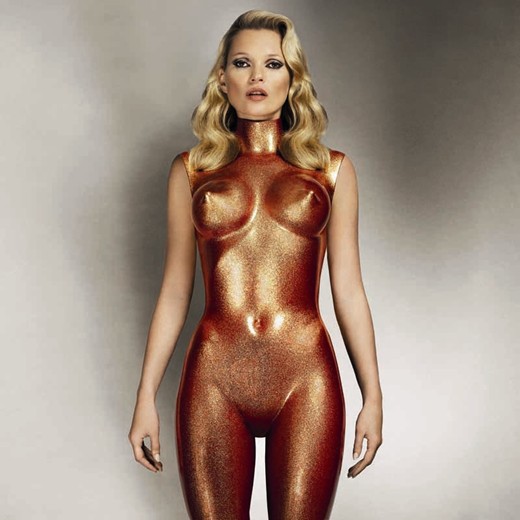
Body Armour, 2013. Photo: Allen Jones
In spite of the critics, his furniture sculptures have gone into art history as famous examples of iconoclasm.
Allen Jones RA will be at The Royal Academy until January 25, 2015.


